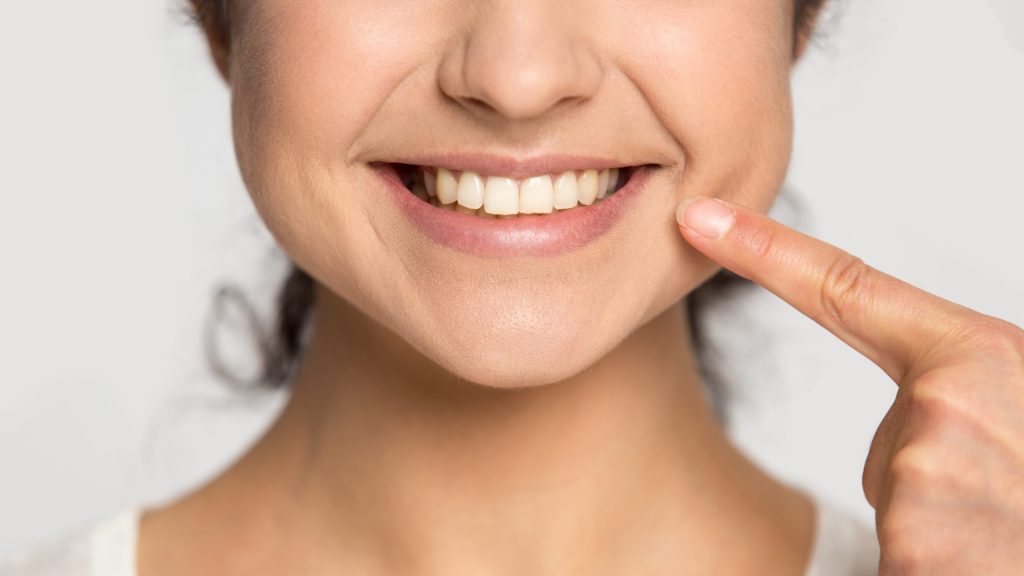Information Library
Start Reading

 Periodontal disease, also known as periodontitis, is commonly misunderstood. In this blog, we address common questions surrounding how to get periodontal disease, how it’s fundamentally different from cavities, and how to prevent and treat it.
Periodontal disease, also known as periodontitis, is commonly misunderstood. In this blog, we address common questions surrounding how to get periodontal disease, how it’s fundamentally different from cavities, and how to prevent and treat it.
Q: How is periodontitis related to gingivitis?
A: Periodontitis is the most advanced form of gingivitis. If you experience gum bleeding, have observed stages of gum recession, and have tender or red gums, you very likely have gingivitis. Gingivitis is an inflammation of the gums caused by the presence of certain “bad” bacteria.
If left untreated, gingivitis can advance into periodontitis, which is much more dangerous. Most people who get gingivitis won’t see it progress to advanced gum disease, because preventative measures go a long way towards avoiding further complications. Early treatment is the best way to keep gingivitis under control so that it doesn’t develop into periodontal disease.
Q: How do people get gingivitis? Am I at greater risk for gingivitis if I have cavities already?
A: Often, we think about the mouth as a static environment. However, that is far from the truth. The mouth is a breeding ground for bacteria, and bacterial communities are constantly vying for territory. Put simply, your oral health depends on the dominance of the good bacteria over the bad. When the balance shifts to favor the bad bacteria, that’s when you see different types of oral problems.
In the case of cavities, the most common bacteria involved are Streptococcus mutans, Streptococcus sobrinus, and lactobacilli. As food breaks down in your mouth, the PH level rises, creating favorable conditions for these cavity-causing bacteria. They feed on the decomposing food in your mouth and excrete acid as a by-product. That acid is the guilty party responsible for wearing down your enamel, resulting in cavity formation.
Periodontitis, meanwhile, is caused by different bacteria. That’s why people who suffer from cavities won’t necessarily have gum disease as well. People get gingivitis when dental plaque builds up. You may be unaware that the dental plaque itself is bacteria clumped together in a community.
The only way to prevent periodontal disease is to disrupt these communities through cleaning. People with gingivitis need more frequent cleanings at the dentist to prevent plaque buildup because their mouths are already vulnerable. Once the gingivitis is under control, we recommend biannual dental cleanings in addition to your regular dental hygiene at home.
Q: What are common periodontal disease symptoms? What does the disease look like at each stage?
 A: Periodontal disease generally progresses in episodes. It develops because of your body’s natural immune system reaction to the presence of periodontal bacteria. Your immune system recognizes and tries to destroy any antigen-like bacteria. When bacteria injure oral tissue, the damaged cells release chemicals that cause the blood vessels to leak fluid, causing inflammation. This helps isolate the foreign invader from further contact with healthy tissue.
A: Periodontal disease generally progresses in episodes. It develops because of your body’s natural immune system reaction to the presence of periodontal bacteria. Your immune system recognizes and tries to destroy any antigen-like bacteria. When bacteria injure oral tissue, the damaged cells release chemicals that cause the blood vessels to leak fluid, causing inflammation. This helps isolate the foreign invader from further contact with healthy tissue.
With gum disease, the bacteria’s presence in your mouth stimulates a continuous state of inflammation. To protect itself from the bacteria, the gum tissue (and eventually, the jawbone) recedes. Gum recession opens small gaps or “pockets” between the teeth and gums. When these gaps become more than a few millimeters deep, the bacteria can infect the area and extend their reach into the periodontal tissue. They may destroy the periodontium and jawbone, loosening the teeth. If the disease gets worse, the teeth may fall out or need extraction. Periodontitis is the most common culprit of tooth loss among adults.
Q: Is gum loss permanent? Can advanced periodontal disease be reversed?
A: Unfortunately, gum loss is permanent. There is no way to grow the gum back. However, periodontists offer certain reconstructive surgeries, such as gum grafting, which are highly effective in repairing the damage caused by gum disease.
Additionally, even advanced periodontal disease can be reversed through proper treatment by a periodontist. This will likely involve several in-depth cleanings to disrupt the bacterial plaque inflaming the periodontal tissue.
Lifestyle changes can be another crucial component in addressing the disease. Saliva plays an important role in washing away bacteria from your teeth and gums, so you should keep your mouth moist by drinking plenty of water and eating foods that stimulate saliva. Eating nutrient-rich foods is another way to boost your immune system and slow the disease’s progression. You can talk to your dentist about the measures most appropriate for your case.
Finally, if you are a smoker, the most important thing you can do to reverse periodontitis is to quit. Periodontitis advances much more quickly in smokers as compared to other patients.
Every case of periodontitis disease needs individual evaluation. You may only have minor gingivitis that never develops into full-blown gum disease. Or you might have advanced gum disease that is affecting other body systems (studies show that gum disease is related to both diabetes and heart disease). The key is visiting a dentist in a timely fashion so that you can get evaluated and take appropriate measures to counteract it.
To learn more about gum disease and periodontal care, download our free ebook “Periodontics Treatment: Do You Really Need It?” To schedule an appointment with a Penn Dental Medicine periodontist, please call our offices at 215-898-8965 today.